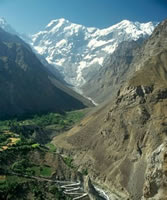HAJIRA AJK

Hajira is a Tasil of Poonch district. Hajira is sorrounded by beautiful villages. Total Population of Hajira and sorrounded villages is almost Fourty Thousand(40,000). Line of Control ( Tatri Not Crassing Point) is only 5 Km far from Hajira city. There is a river ( Ranghar) passing from near to Bazar. There is alos a big Madrasa undercountrection, the Madrasa owner is Hazrat Pir Allao-ud-Din Sadiqi (Niarian Shareef). The weather of this city is hot in summer as compare to other Kashmir's citites.The special thing in hajira is that all hotel and resturant open 24 hours You can find a few hotel for stay. There is Degree college for boys and girls and as well as science model schools, and many other private schools. You can find a few hotel for stay. The people of this city is very polite and helpful.
















